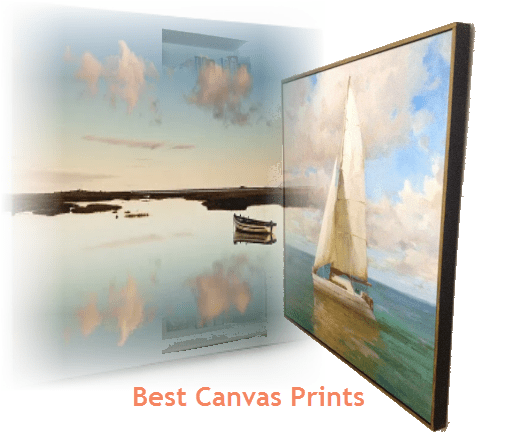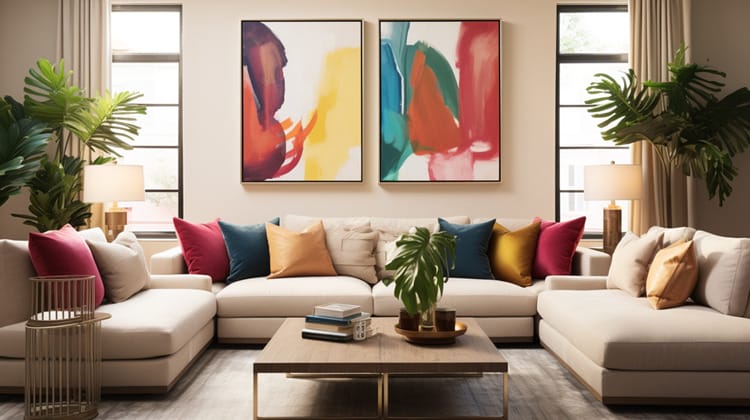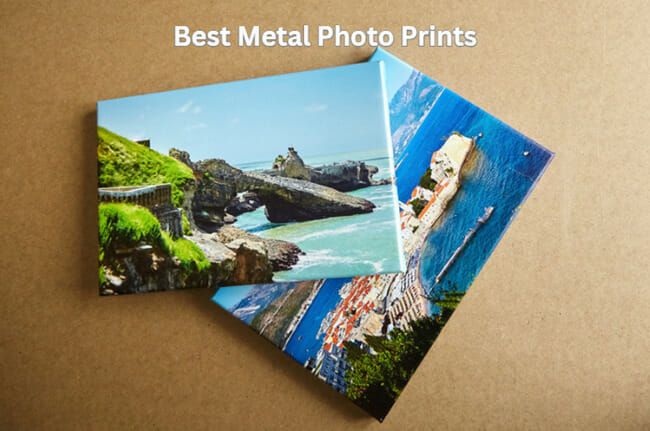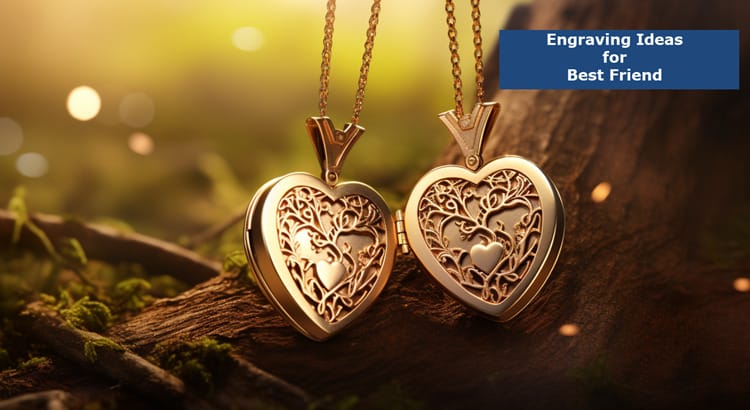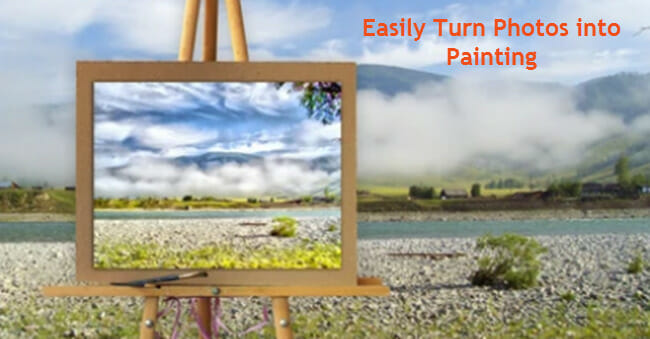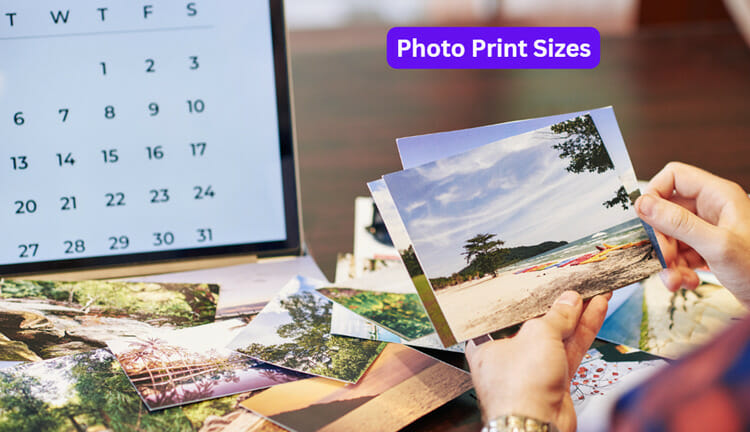
Have you ever tried printing a picture only to have it come out looking awkward?
You could find that this problem occurs more frequently than you believe, and it usually results from selecting the wrong photo print size.
Photographers should know how to calculate print sizes for their photos. Every size has a use and a certain allure, from small images for your living room wall to giant ones for your wallet.
Imagine knowing exactly what photo print sizes are and being able to select the ideal one for each of your priceless memories.
No more pictures that are strangely cropped or pictures that seem out of place.
As you read on, you will learn about standard, common, and tiny sizes for photo prints.
Importance of Selecting the Right Photo Print Size
If you select the print size improperly, your creation will be less effective and have a lesser impact.
Consider display positioning, image purpose, and desired detail level when making decisions.
First off, the location where a photograph will be displayed is a major factor in determining the best print size. The size you choose should be proportional to the location's measurements to avoid losing the piece of art due to an inadequate or excessive size.
A small picture may seem insignificant in a vast room, but displaying a large picture in a small space may make it seem overpowering and unorganized.
The appropriate photo print size should be determined by the intended use of the image.
The picture size should be larger if the artwork is intended to be used as advertising or as photographic prints for a gallery show to attract visitors from a distance.
A more intimate image, however, can call for a smaller print size to fit into a limited space or arrangement, such as a family album or home décor.
Additionally, picking the right photo print size will improve the aesthetic appeal of the image and cut down on administrative tasks like clipping out parts of the image to “make it fit.”
Cropping or resizing is unneeded when the appropriate print size is available, which saves time and reduces the possibility of losing important features in the image.
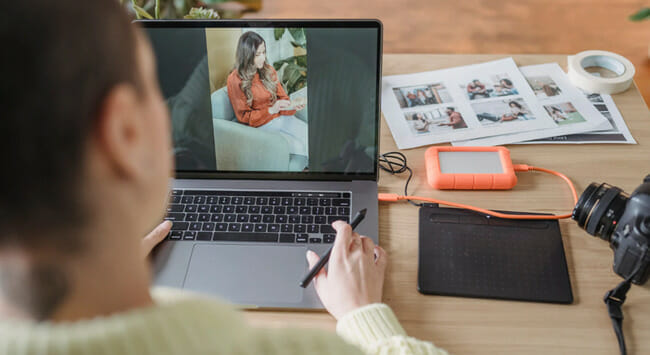
Choosing the right print size depends on the degree of detail in a photograph.
Print size is an important consideration because it can either emphasize or minimize picture details.
The larger the print size, the more the image will be appreciated and comprehended.
A picture that has been extended beyond its intended boundaries is also protected from distortion and pixelation.
To ensure that your works are displayed and visible in a size that best complements and brings out the best in your art or photos, choosing the right photo print size requires careful consideration of several factors, including intended display location, purpose of the image, and desired level of detail.
Artwork's impact and effectiveness are determined by its size. The ideal size successfully displays a photographer's work.
How Different Aspect Ratios and Dimensions Impact the Final Print
The final print of an image must have the appropriate aspect ratio. The print outcome can be significantly impacted by different ratios and proportions.
An image's aspect ratio determines how its width and height are related.
Unlike older televisions and computer monitors, which have more commonly used 4:3 aspect ratios, contemporary digital media has generally favored 16:9 aspect ratios.
The printed size of an image is greatly influenced by its aspect ratio. To reach the desired dimensions, a key element is to learn and master it as well as optimize it.
Cropping may be required if the image does not match the aspect ratio of the printing paper.
The resolution of the image will unavoidably be impacted by this downsizing procedure, resulting in either a loss of resolution or a change in composition.
A 2:3 image needs to be cropped and shrunk to fit a 4:3 printing paper, for example.
The composition will change as a result of the loss of some of the image's information.
Furthermore, the print quality may be degraded when the resolution is lost during image resizing.
Images' aspect ratios and dimensions can also affect how they are perceived.
A wider, more immersive perspective of the landscape can be obtained by taking photos with a wide 16:9 aspect ratio.
As opposed to this, a portrait photograph with a vertical 4:3 aspect ratio can concentrate more on the subject, bringing out their features and feelings.
Therefore, while selecting whether to publish an image, photographers and designers must take its aspect ratio and size into account.
The optimum option for printing paper would be one whose aspect ratio both complements the image and is appropriate for the intended application.
The composition and resolution of the image are not harmed in this way, and the final print is of the greatest quality.
Understanding Aspect Ratios and Their Significance
Aspect ratios are the unsung heroes of photo print sizes.
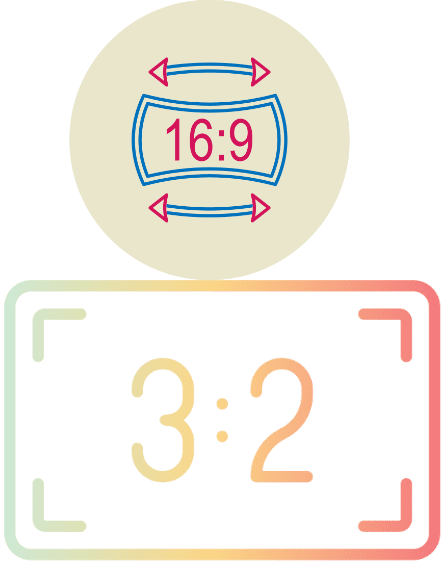
Even though they might seem like boring, technical terms to the untrained eye, aspect ratios are essential to creating stunning prints that capture memories in the finest way possible.
We'll start with the basics.
The sizes available when printing your photos include 4×6, 5×7, 8×10, and more. But did you know that each print size has a unique aspect ratio?
4×6 prints have a 3:2 aspect ratio, whereas 8×10 prints have a 5:4. Panoramic prints range from 2:1 to 5:1.
In photo printing, it is important to understand aspect ratios. Your photo will be printed at its most appropriate size if you use the right ones.
For portrait-style shots, like close-ups of faces, consider 5×7 or 8×10 print with vertical aspect ratios. To create stunning landscapes, panoramic prints are ideal.
Cropping your photos effectively also depends on aspect ratios. When resizing or cropping images for specific print sizes, preserving the original aspect ratio is crucial.
Avoid stretched or squished prints by maintaining the correct aspect ratio.
Whether you use a photo editing program or a professional printer, knowing your aspect ratios is essential for the most accurate crop.
Prints with aspect ratios are timeless. Don't underestimate their importance.
Next time you choose which photos to print, appreciate the humble aspect ratio. Printing is prevented from going haphazardly, and stunning results are ensured.
Explanation of Aspect Ratios in Photography
Even if you use a fancy DSLR or just a smartphone, the width-height relationship can make all the difference.
So, what exactly are aspect ratios in photography?
Well, it's the proportion between the width and height of an image.
Different cameras shoot in different aspect ratios, so you may have seen images that are square, rectangular, or even panoramic.
35mm film's standard aspect ratio is 3:2, which most photographers adhere to. The 4:5 aspect ratio might work in your favor if you want your Instagram followers to be impressed (because let's be real, that's all that matters).

In what way does the aspect ratio matter?
Your image's composition and feel can be affected by it. A square aspect ratio can create a sense of balance and symmetry, while a panoramic aspect ratio can make your image feel expansive and almost cinematic.
No matter how experienced you are or how just getting started you are, you must understand aspect ratios to create stunning visuals. Along the way, you might even impress a few social media followers.
Why Aspect Ratios Matter in Print Sizing
Your photograph's aspect ratio is important to consider when printing.
How your photo will fit on the printing paper depends on the image's aspect ratio, which is the relationship between height and width.
You may need to crop the image, resulting in the loss of valuable composition elements if your camera's aspect ratio does not match the print size.
Print sizes should align with your camera's aspect ratio to ensure your photo appears exactly as you intended.
With a good understanding of aspect ratios and print sizing, your prints will turn out the way you imagined, without any unwanted cropping or distortion.
The Relationship between Aspect Ratios and Image Composition
Aspect ratios and image composition go together like peanut butter and jelly, or cheese and wine.
In essence, the aspect ratio (the ratio of your photo's width to its height) can make or break its composition. A photo's aspect ratio is even more important if you're planning to print it since it determines its size.
To showcase the panorama's sweeping landscape, you might want to print it in a larger size if it has a wide aspect ratio.
In contrast, a portrait photo shot with a narrower aspect ratio might be better suited to a smaller print size.
Whatever your aspect ratio, just make sure it's working in harmony with your composition. Your photo (and your wall) will thank you.
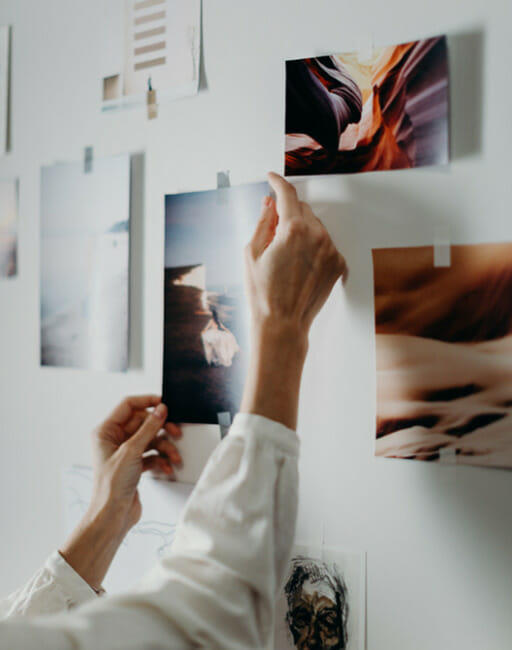
Standard Photo Print Sizes and Aspect Ratios
Here, we explore the definitions, common ratios used in the industry, and how they influence your decisions about cropping and framing for the best presentation of your photos.
Explanation of Standard Photo Print Sizes
Let us explore standard print sizes as well as the best aspect ratio that you can apply to each to bring out the best in your photos.
Here is a detailed breakdown of each size and aspect ratio with the best fit for each.
18×24 Inches (Best Aspect Ratio – 3:4)
The classic 18×24 inches photo print size can be likened to the little black dress of the photography world – it always looks good and never goes out of style.
But what makes this size stand out?
The aspect ratio is everything.
The best aspect ratio for an 18×24 inch photo print is 3:4. Accordingly, the image's height should be three-fourths of its width.
Why?
Because it ensures that your image looks its best at this size. Trust us, no one wants a stretched-out, pixelated mess hanging on their wall.
Don't forget to consider pixel count as well.
For a print this size, you'll need your image to be a whopping 5400 x 7200 pixels. Even though this seems like a lot, it's necessary to ensure a sharp, high-quality print.
24×36 Inches (Best Aspect Ratio – 3:2)
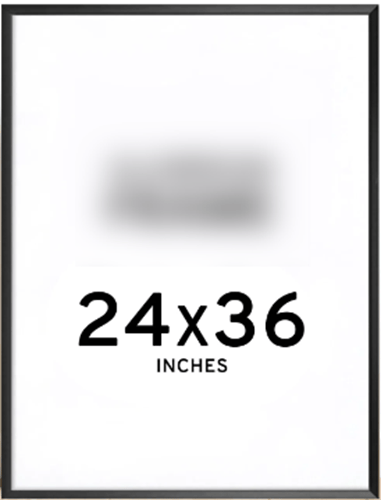
Are you tired of getting subpar-quality prints?
Want to make sure your memories look crystal clear, even when blown up to extra-large sizes?
Well, have no fear.
When it comes to printing photos in large sizes, pixel count is key – and that's where the 7200 x 10800 digital image size comes in.
Using this size will ensure that even the tiniest details in your photo are captured, resulting in a beautiful, high-quality print.
But hold on, what about the aspect ratio?
That's where the 3:2 ratio comes into play.
Essentially, this means that the width of your photo will be 1.5 times the height.
Why is this important?
Well, it's because this ratio is one of the most common in photography. It will ensure that your photo looks natural and not distorted in any way.
To sum it up, for the best possible extra-large photo print, use a digital image size of 7200 x 10800 pixels and stick with a 3:2 aspect ratio. Your memories will thank you for it.
12×18 Inches (Best Aspect Ratio – 3:2)
If you are looking to print a photo at 12×18 inches, then consider this first – size matters!
The larger the print, the higher the resolution you need for optimal image quality.
That's where pixel size comes into play. Aim for a pixel size of 3600 x 5400 pixels for the best results.

And don't forget about aspect ratio, the proportion between the width and height of your photo.
Stick with a 3:2 aspect ratio and you'll be laughing all the way to the framed masterpiece on your wall.
In short, keep it large and in charge with a 12×18 inch photo print and remember, pixels and aspect ratios are your BFFs in the printing game.
8×10 Inches (Best Aspect Ratio – 5:4)
Have you been frustrated by lackluster photos that do not impress friends and family?
Go big or go home! That's the simple solution. And by big, we mean 8×10 inches. This slightly larger size is the key to making your images pop with impact.
As with anything worth having, it takes some effort.
Keep your 8×10 prints in a 5:4 aspect ratio to maximize their impact.
Just be sure to crop your images accordingly, and make sure nothing important is lost in the process.
If you're resizing an image, aim for 2400 x 3000 pixels to hit the sweet spot.
You'll be producing gallery-worthy prints in no time if you follow these simple steps.
6×8 Inches (Best Aspect Ratio – 4:3)
The 6×8 Inches photo print size describes an ideal size for printing photos taken on smartphones, which typically have a 4:3 aspect ratio.
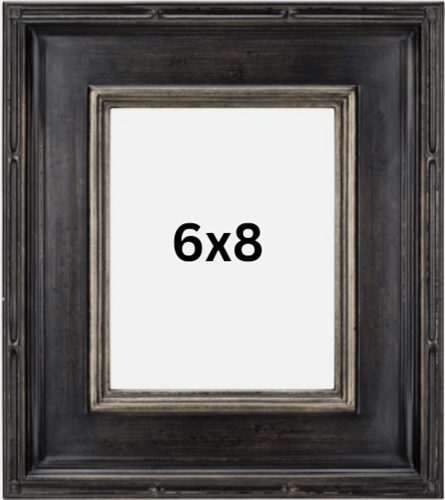
Photographers use this aspect ratio often today, so it makes for a popular printing and framing choice.
The 6×8 inch size is larger than standard 4×6 prints, but not so large that it becomes cumbersome to handle or display.
The 6×8 size also provides greater detail and clarity, so special memories can be displayed with ease.
For printing and framing photos, the 6×8 inch size with a 4:3 aspect ratio is a versatile and popular choice.
8.5×11 Inches (Best Aspect Ratio – 4:3)
The 8.5×11 Inches photo print size is best suited for posters or large prints.
Resizing the image to 3400 x 4400 pixels will achieve optimal results when the aspect ratio is 4:3.
With this aspect ratio, the image is neither stretched nor distorted, and the composition is balanced and pleasing to the eye.
Also, displaying high-resolution images, such as professional photographs or artwork, can be made possible with this size.
Displaying visual works using an aspect ratio of 4:3 and printing art in the size of 8.5×11 inches offers a high-quality option.
5×7 Inches (Best Aspect Ratio – 3.5:2.5)
The 5×7 Inches photo print size is ideal for framed photos and greeting cards.
To ensure the highest quality and perfect fit, it is recommended to use a camera with a 3.5:2.5 aspect ratio and then crop the image slightly to meet the 5×7-inch print size.
For optimal printing results, the photo should have a resolution of 1500 x 2100 pixels.
Following these guidelines will allow for a visually stunning and correctly sized printed photograph.
4×6 Inches (Best Aspect Ratio – 3:2)
4×6 Inches is one of the most common photo print sizes that perfectly fits into a 3:2 aspect ratio.
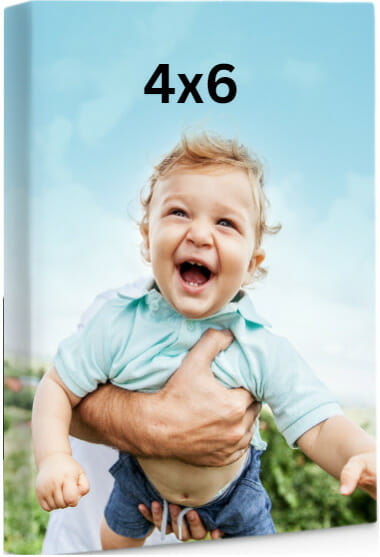
This size is preferred for framed photos, greeting cards, and postcards as it doesn't require any cropping.
To ensure the best quality print, the image should have a pixel length of 1200 x 1800 pixels.
Due to its ideal width-to-height ratio, this size is popular for a variety of printing tasks.
As a bonus, this aspect ratio is similar to the standard 35mm film, making it an easily recognizable size.
Common Aspect Ratios and Their Applications
Here are some of the most commonly used aspect ratios and their unique properties:
16:9 Aspect Ratio
On modern computer monitors and televisions, 16:9 aspect ratios are typical.
For printing photos, a 16:9 aspect ratio would have a longer width and shorter height than a traditional 4:3 photo. A wider field of view can be captured with this ratio, which is commonly used for landscape and panoramic photography.
It is important to consider the image resolution and size when printing 16:9 photos.
Since this format is wider than traditional photo sizes, cropping may be necessary to fit the image onto a standard print size such as 4×6 or 8×10.
Most types of media use the 16:9 aspect ratio in photography and videography.
Videographers and photographers who want their work to be viewed on a variety of platforms should consider this format when shooting widescreen films, television shows, and YouTube videos.
4:3 Aspect Ratio
Computer monitors, TVs, and digital cameras commonly display photos in a 4:3 aspect ratio.
Keeping the image composition and quality intact is made easier when using the 4:3 aspect ratio.
Compared to other aspect ratios, it allows photos to fit comfortably on printed pages without being cropped or distorted.
Portraits, landscapes, and still-life photography are all possible with this camera because of its versatility.
It is also easy to make high-quality prints with a 4:3 aspect ratio thanks to the most popular imaging software and printers.
3:2 Aspect Ratio
In film and digital photography, the 3:2 aspect ratio is commonly used.
Having the same aspect ratio as 35 mm film, it is a popular choice for photographers trying to replicate traditional film photography.
4×6, 5×7, and 8×12 photos are commonly printed using the 3:2 aspect ratio.
Aspect ratio matching the print size is important when printing photos to avoid cropping or distortion.
A 3:2 aspect ratio is also common in digital cameras, with many manufacturers offering the option to mimic the look of traditional film photography by shooting in this ratio.
As a traditional and timeless format, the 3:2 aspect ratio remains popular with photographers.
1:1 Aspect Ratio
1:1 aspect ratios result in square images with equal width and height. Social media profile photos are commonly in this format.
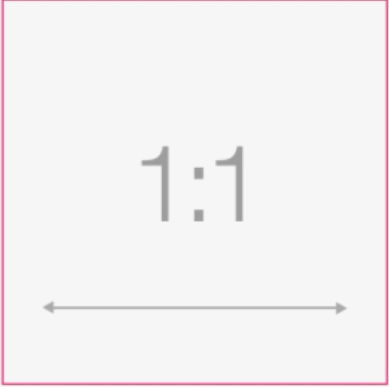
When printing photographs, a 1:1 aspect ratio can create a unique and visually appealing composition, especially when paired with a square frame or matting.
Adding symmetry to a subject or creating bold, eye-catching images is also possible with this technique.
However, it’s important to note that not all printers or photo labs may offer this specific size, so it’s important to check ahead of time.
An aspect ratio of 1:1 can add a creative touch to photographic prints and enhance their presentation.
How Aspect Ratios Affect Cropping and Framing Choices
Cropping and framing decisions in photography are heavily influenced by aspect ratios.
Unlike digital images, prints come with fixed aspect ratios determined by the paper size. Therefore, photographers must consider how their framing choices will affect final print sizes and aspect ratios when capturing images.
It is possible to lose important elements in an image if the framing is incorrect.
It is also possible to stretch or squinch the image if the aspect ratio is not correct.
Aspect ratios, therefore, need to be carefully considered when framing for the best possible prints and minimal post-processing.
Different Types of Photo Prints
Here's a list of various photo print types to consider for your next printing project:
Wood Prints
Photographers looking to add texture and color to their photos will appreciate wood prints.
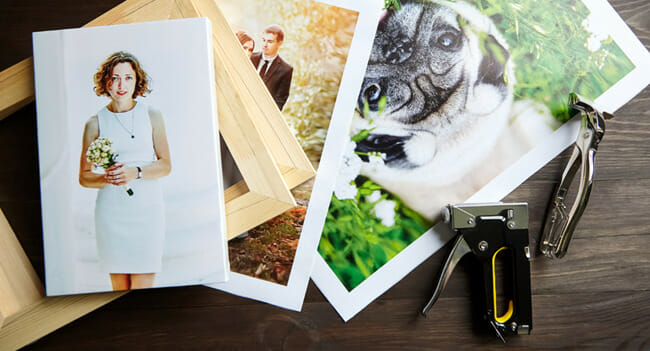
Customizing picture frames, drink coasters, toy blocks, and signs is among the options they offer.
A variety of wood types are available at different price points.
For a clean look, wood prints can be hung without a frame.
Printing photos on wood is an excellent option if you want a natural and high-quality product.
Wood prints can be customized to fit any size you require.
Acrylic Pints
Printed directly on acrylic material or over a paper print, acrylic prints are a modern, vibrant type of photo print.
For environments with a high humidity level, the material is incredibly durable and scratch-resistant.
Acrylic prints are often compared to metal prints due to their similarly modern look and reflect light, giving the impression of a back-lit image.
Despite being more expensive than other print types, acrylic prints are well worth the cost as they offer a unique and impressive display that can make photos stand out.
Posters
Due to their low cost and flexibility in printing large images, posters have become a popular method of displaying photos.
However, they typically do not offer the same quality as fine-art paper or canvas prints in terms of color and durability.
Despite this, posters are an easy option for hanging photos on a wall by simply taping them up.
An eye-catching poster can be created by creative editing.
Canvas Prints
Due to their elegant, dimensional look and lack of glare, canvas prints are popular in the photography world.
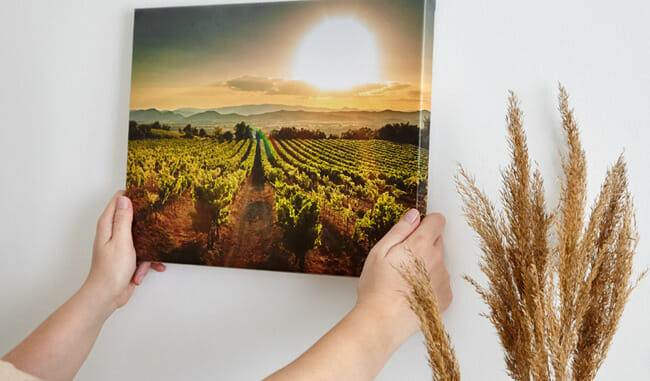
Canvas prints are stretched across a wooden frame, eliminating the need for expensive framing.
While not as durable as metal prints, canvas prints are still more sturdy than paper prints and can be displayed in a variety of locations.
For photos with a more three-dimensional feel, their texture adds depth.
In the photography community, canvas prints are becoming increasingly popular at prestigious art fairs.
Metal Prints
Due to their durability and modern appearance, metal prints are a popular choice for photo prints.
While they may be expensive to make, they can handle wear and tear and enhance colors to make images pop off the background.
Unlike other prints, metal prints do not require framing and can be mounted directly to the wall, saving money and hassle.
When it comes to photo print sizes, metal prints can be created using chromaluxe dye-sublimation on an aluminum sheet, resulting in a strong and long-lasting print.
However, metal prints may not be as sharp or vivid as acrylic prints and require careful attention to color accuracy and image quality during the printing process.
Metal prints are particularly suitable for outdoor and high-traffic areas.
Paper Prints
Displaying photographic images on paper is a versatile and affordable option.
They are available in a range of sizes from small 4 x 6 prints to larger 40 x 60 pieces.
While convenient and lightweight, the longevity of paper prints can vary depending on the materials used in the printing process.
Therefore, it is recommended to use frames to protect the prints from damage caused by wear and tear.
Despite the additional cost of framing, paper prints offer accurate and vivid color reproduction.
Large Format Prints
Large Format Prints are high-quality, museum-grade photo prints designed for life's biggest moments.
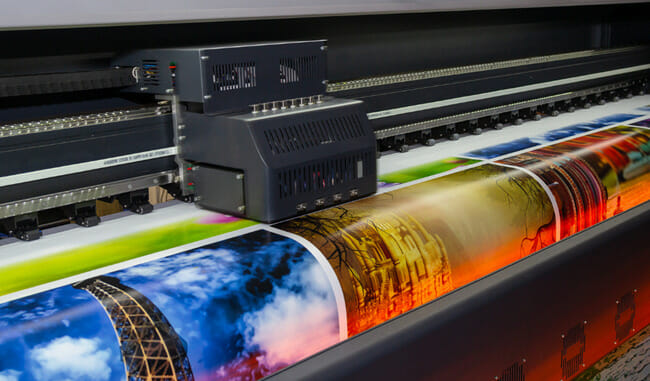
They are inkjet printed on archival paper to recreate scenes with impeccable detail and true-to-life colors, allowing you to print your phone photos at larger sizes without losing quality.
Landscape photos, portraits, and any other image you want to remember in life-size are perfect for these prints.
Although the paper used is thinner than other prints, it still maintains its high quality and should be handled with care when framing and mounting.
Adding a touch of elegance and sophistication to any room is easy with these prints.
So, make sure to give your important memories the treatment they deserve with Large Format Prints.
Signature Prints
Creating statement pieces for special events or memorable occasions is easy with Signature Prints, a collection of premium-quality photo prints.
Printed on ultra-thick four-ply paper with a matte finish, these prints have a texture similar to regular matte prints but come with a strong border for a museum-quality look.
Among the sizes available are 5 x 7″, 8 x 8″, 8 x 10″, 11 x 14″, which make them ideal for framing portraits or displaying on your favorite shelf.
One pro tip is to view your image on your computer with the brightness lowered down to 50% to ensure the best results.
When it comes to displaying inspiration, these ultra-thick prints can stand on their own or be inserted into a photo holder for an effortless yet stylish look.
Square Prints
Instagram, VSCO, and iPhone photos are especially suited to square prints. Their aspect ratio is 1:1.
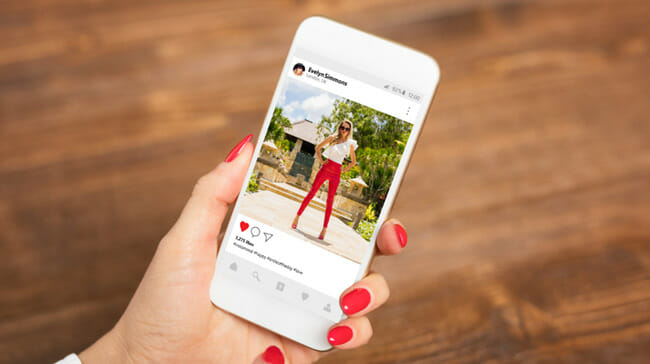
Square Prints have the advantage of displaying a cohesive and visually pleasing collection of square images.
Rotating Square Prints 45 degrees creates a diagonal display that is sure to impress visitors.
This stylish and versatile way of displaying social media photos is what Square Prints are all about.
Screen Printing
A screen is used to transfer ink or metal to a desired surface during screen printing.
Traditionally, this method is used to make t-shirts and other clothing items over 1000 years ago.
Posters and banners can be printed using screen printing on larger sizes of paper.
By using screens, ink can be placed precisely on the paper, resulting in high-quality prints.
Screen printing can print images in a variety of colors for photo-based designs.
3D Printing
From a digital file, 3D printers create 3D objects using an extruder.
Artists and engineers can now create objects in almost limitless designs and shapes, thanks to it.
Art and industry have benefited greatly from 3D printing's ability to create designs from digital files using a variety of software programs.
Customized objects with intricate details and shapes are now easily and cost-effectively produced.
Digital designs can be made tangible and functional via 3D printing.
Related: The Best Resin 3D Printers
Glass Photo Prints
Digital ceramic printing or LED UV printing on glass makes glass photo prints a unique and functional printing medium.
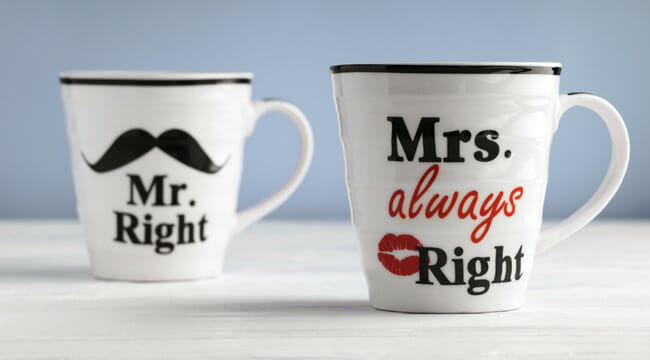
Businesses looking to brand their products such as alcohol, food, and fragrance bottles commonly use this printing method.
Photo prints on glass are available in different sizes and guarantee a sleek and stylish appearance.
Both residential and commercial uses can benefit from their large and grandiose sizes.
With LED UV or digital ceramic printing technology, high-resolution, vividly colored pictures can be printed on glass.
As well as being durable and less likely to fade, glass photo prints make a perfect choice for indoor and outdoor displays.
With the ability to showcase photos and add a touch of elegance that complements the surrounding interior and exterior, glass photo prints are becoming increasingly popular for home and office decor and branding.
Matching Print Types with Intended Subjects and Aesthetics
This has to do with the process of selecting the most suitable print size and finishing options for a particular photograph that considers the subject matter, intended use, viewing distance, and desired visual impact.
To ensure a photo print of high quality, the original image's clarity, color accuracy, and detail should be preserved.
As part of this process, factors such as aspect ratio, resolution, image compression, paper quality, and finish options should be considered.
Choosing the right print size and finish option also affects the printing cost and the final output quality.
Apart from visual appeal, correct print sizing also ensures that the photograph is viewed comfortably from the desired distance, enhancing the viewer's overall experience.
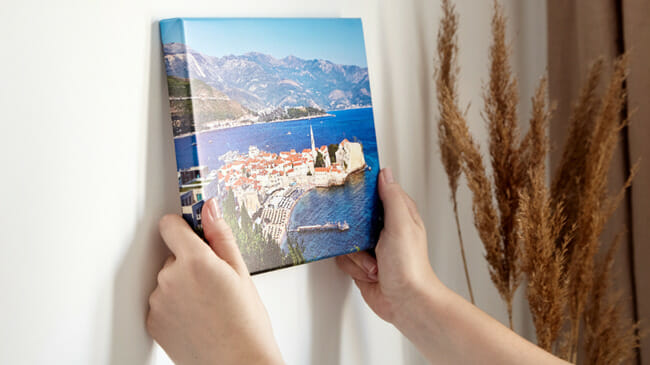
To achieve the desired visual impact and aesthetic values, professional photo printing requires the matching of print types with intended subjects and aesthetics.
Tailoring Print Types to Enhance Visual Storytelling
This has to do with selecting the most suitable printing technique for a particular image to effectively convey its story and message to the viewer.
For instance, using a matte finish for a vintage or classic photograph can give it a more authentic and natural-looking appearance, while glossy prints are better suited for highly detailed images with vibrant colors.
An image's impact can be dramatically influenced by the size of the print.
In smaller prints, there may be more intimacy and a greater sense of intimacy, while larger prints offer greater detail.
Photographers and designers can create truly captivating stories if they know how to use print types and sizes correctly.
Popular Photo Print Sizes for Social Media
Let us explore the most commonly used photo print sizes across various social media platforms:
LinkedIn Background Image
The LinkedIn background image size requires a specific dimension of 1584 x 396 pixels, which is a digital measurement rather than a print size.

However, for those who want to print their LinkedIn background image, converting the pixel dimensions to a print size will depend on the DPI (dots per inch) of the printer used.
LinkedIn Post
When it comes to posting photos on LinkedIn, it is important to maintain a professional appearance by avoiding distortion or stretching.
This can be achieved by resizing the photo to a pixel size of 1200 x 627, which is optimized for the platform's feed.
By adhering to this recommended size, LinkedIn users can ensure that their photos look sharp and visually appealing to their network.
It is worth noting that this size is specifically designed for digital viewing and is not a print size.
The size of a photo should be determined by its intended use.
Pinterest Pins
In Pinterest, pins are used to save or bookmark images, videos, or other content they love.
These pins can vary in size depending on the desired outcome, but the recommended size is 1000 x 1500 pixels with an aspect ratio of 2:3.
If the pins are intended for print use, these sizes can affect physical print sizes.
Twitter Cover Photos
Twitter Cover Photos are digital images that go across the top of a user's profile and require a horizontal size of 500 x 1500 pixels.
Unlike print sizes, which are physical dimensions, these digital dimensions allow social media users to creatively brand and personalize their Twitter profiles through visual storytelling.
As well as showcasing their products and services, Twitter Cover Photos allows businesses to promote their brand identity through imagery.
Twitter Posts
This has to do with the appropriate photo sizes that users should use when including images in their tweets.
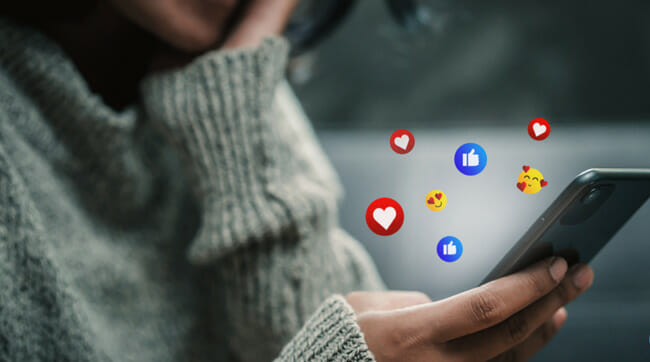
To ensure the best quality and clarity, Twitter recommends different sizes for single images, sets of images, and images within links.
For a tweet with one image, the suggested size is 1200 x 675 pixels, while for a tweet with two images, each image should be 700 x 800 pixels.
Lastly, if including an image as part of a link, the recommended size is 1200 x 628 pixels.
Twitter users can ensure their images look their best by adhering to these guidelines.
Facebook Cover Photos
It is important to ensure that the image size is 820 x 312 pixels and to avoid placing any important information on the left-hand side where the profile picture may cover it.
However, 820 x 312 pixels may not be suitable for printed materials such as posters or flyers, as higher resolution and larger dimensions are required for clear and quality images in print.
It is essential to consider the end use and medium of the image before selecting the appropriate size for printing.
Facebook Stories
Facebook Stories, like Instagram Stories, require an image size of 1080 x 1920 with an aspect ratio of 9:16, making portrait photos the best option.
Facebook Posts
The recommended image size for Facebook Posts is 1200 x 630 as this ensures that the photo does not become pixelated or distorted when uploaded to the social media platform.
Instagram Stories
To fit the vertical format of Instagram Stories, photos should be taken in portrait orientation or resized to 1080 x 1920 with an aspect ratio of 9:16.

Instagram Posts
The optimal image size for Instagram Posts is a 1:1 aspect ratio of 1080 x 1080 pixels.
Although Instagram scales down the image, a larger photo size guarantees the highest image quality.
Tumblr Image Sizes
While the profile photo size is relatively small at 128 x 128 pixels, the larger 500 x 750-pixel image post size allows for more creative flexibility.
File size limitations must also be considered, so images should not exceed 10 MB.
YouTube Image Sizes
Creating an attractive YouTube channel that can potentially attract millions of viewers every day depends on the size of the YouTube images.
YouTube channel cover photos and videos also have specific dimensions, including a 16:9 ratio for video uploads and resolutions ranging from 144p to 4K, depending on the desired visual quality.
The maximum file size is 128 GB, with an up-to-date browser required for uploads exceeding 20 GB.
Choosing the Right Photo Print Size: Factors Influencing the Decision
Moving on from understanding various social media platforms' optimal image sizes, we shift our focus towards a more general application, that is, Choosing the Right Photo Print Size.
This significant task is influenced by multiple elements such as the photo's purpose, where it will be displayed, and the aesthetic you wish to achieve.
These determining factors can be further explained as follows:
Purpose
Photo size is determined, in part, by the intended use or function of the photo.
For instance, a photo meant for small frames or online sharing may require a smaller print size than a photo intended for an art exhibit or as a room centerpiece.
Print quality, material, and framing options can also be influenced by the purpose.
Therefore, it is crucial to consider the purpose when selecting the right photo print size to achieve the desired outcome.
Location
It is crucial to consider the intended display location when choosing the right size for a photo print.
For instance, a large wall print may be appropriate for a spacious living room, while a smaller size may be ideal for office desks or bedside tables.
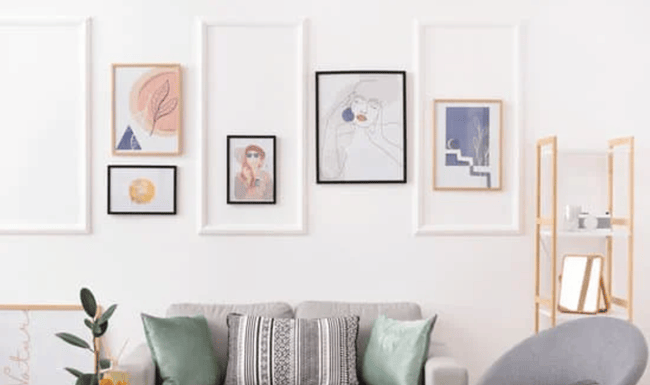
The location can also influence the resolution and quality of the print, as well as the paper type and finish.
For this reason, understanding the location is key to tailoring the photo print size to create the desired aesthetic and impact.
Aesthetics
Aesthetics is a key factor to consider when deciding on the appropriate photo print size because it can hugely impact the visual impression and emotional appeal of the image.
The right size can effectively highlight the details and beauty of the subject, while a poor size can distort or undermine these qualities.
To achieve the desired aesthetic impact, lighting, color contrast, composition, and intended use of the photo must also be considered.
In general, the right size of a photo print enhances and complements its visual qualities and its purpose.
Printing Considerations and Techniques
Here are a few key technical points to consider when printing:
Converting Image Dimensions from Pixels to Inches for Accurate Printing
Creating accurate and consistent printed output requires converting image dimensions from pixels to inches.
To plan layouts and size printed materials, one needs to divide pixel dimensions by resolution to determine the physical size of the image.
Printing professional materials such as flyers, brochures, or posters requires precise dimensions and sizes.
As a result, the final product will be crisp and clear, without any distortions or losses in quality in the printing process.
Selecting the Appropriate Photo Paper Sizes for Different Prints
The size you choose will largely depend on the intended use of the print.
From scrapbooks to larger displays, such as posters and wall frames, different paper sizes are recommended.
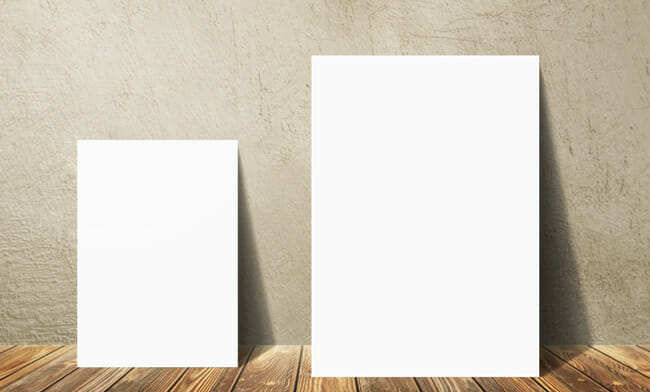
For scrapbooks and albums, smaller sizes such as 4 x 6 or 5 x 7 are suitable, while larger displays such as posters or calendars require a more significant size such as 8.5 x 11.
Picture quality is maintained and the pictures look their best when the right size is chosen, while also catering to the end-user's needs and preferences.
Ensuring High-Quality Prints through Proper File Preparation
Ensure high-quality prints by preparing files properly.
Consider these factors:
File Type
If you wish to prepare a file for high-quality printing, you must consider its file type, since it impacts the overall outcome of the print.
A PDF file is universally accepted and the most reliable format for print documents, as it ensures that the final printed product accurately reflects the intended design.
Other file types such as JPG, TIFF or PNG are often used for digital applications but may result in a loss of quality when printed.
Professional printers prefer PDF files because they are easier to manage and adjust for optimal printing.
Therefore, it is recommended to always convert files to a print-ready PDF before sending them for any printing needs.
Fonts
A font's quality and legibility are both influenced by the printing process.
It is crucial to ensure that all fonts used in a document are properly embedded or outlined to prevent any potential formatting issues.
Additionally, it is essential to communicate with the printers beforehand to determine if any specific font files need to be provided.
Proactively preventing delays during the printing process will result in crisp, clear text on the final product.
CMYK
CMYK is a color model used in printing that stands for Cyan, Magenta, Yellow and Key (black) – the four basic inks used to create all colors in a print.
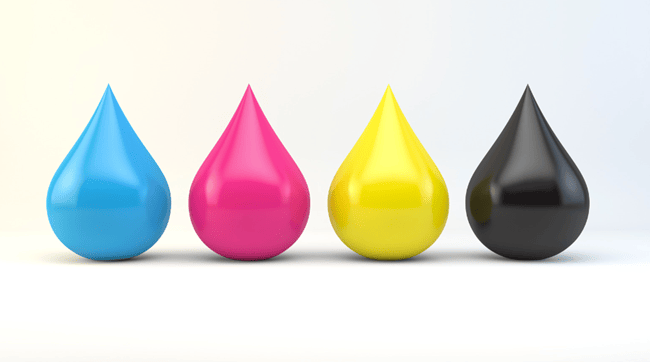
It is important to use CMYK when preparing print files as it ensures accurate color representation and prevents color shifting during the printing process, resulting in high-quality prints.
Using RGB (Red, Green, Blue) or other color models may lead to unexpected color shifts that can detract from the final product.
Resolution
Resolution determines the amount of detail and sharpness in an image.
A resolution of 300 dpi is recommended for the best print results, as lower resolutions may result in blurry and pixelated prints, especially when scaled up in size.
To determine the ideal output size, divide the number of pixels by 300.
Image
It is important to avoid using copyrighted images with watermarks and to obtain written permission from professional photographers if their photos are being used.
Purchasing images from stock image websites also ensures that they are legal and of high quality.
Spellings
Spellings, or correct spelling, is a crucial factor that should not be overlooked in ensuring high-quality prints through proper file preparation.
Any typos or misspelled words, if left unchecked, can be a costly mistake that can affect the credibility and reputation of the document or project.
It can help greatly to improve the accuracy and clarity of the document if spell-check tools are employed and proofreading assistance is sought.
Crop Marks
Crop marks are lines added to a print file to indicate where to trim the final product.

They are an essential factor in ensuring high-quality prints as they guarantee that the printed image matches the intended design and prevent any unwanted white space on the edges.
When sending a file already imposed, the crop marks should be offset by 1/8″ from the finished image to ensure that the final product is accurately cut.
Not all files require crop marks, only those that are already imposed, but they are crucial for ensuring that the printed product matches the intended design.
Project Dimensions & File Size
By correctly sizing the file, it will be compatible with the print dimensions, and by optimizing the file size, distortions will be minimized.
Proper preparation of files by adjusting these factors results in consistency in output regardless of the final printing size.
Exploring Small Photo Print Sizes
We will now take a look at small print sizes:
Benefits and Creative Possibilities of Small-Sized Photo Prints
If you print photographs in smaller sizes, you will be able to save money, handle your photos more easily, and create more collages or displays.
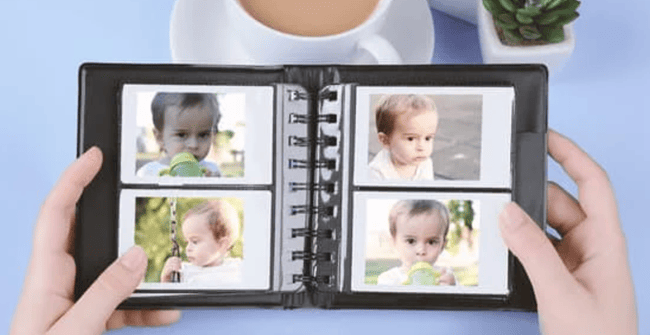
In addition to being more affordable than large prints, small photo prints can be used to create photo albums, personalized postcards, or wall art.
Due to their size, they can also be arranged in unique patterns or shapes when hanging or displaying.
Keeping precious memories in a tangible form is the value of a small-sized photo print for future generations.
There are endless possibilities for enhancing and beautifying a photograph if one discovers the potential of small-sized photo prints.
Techniques to Maintain Image Clarity and Detail in Smaller Prints
Maintaining image clarity and detail in smaller prints can be achieved by using lossless file formats like TIFF or PNG when submitting the resized image for printing.
As a result, all image data is preserved without compression, ensuring the highest level of detail and color accuracy.
Adobe Photoshop, GIMP, or Pixlr can be used to resize images while maintaining their quality.
How to Curate a Collection of Small Prints for a Unique Display
The following are some ideas on how to curate a collection of small prints to create a visually pleasing display:
Consider Triptych (Triple Purchase) or Diptych (Double Purchase)
The idea of considering a triptych or diptych as a way to curate a collection of small prints offers a unique and visually engaging display option that ties together multiple pieces based on size and theme.
A cohesive series of artwork can be arranged in a variety of ways, adding depth and detail to any space.
Additionally, investing in multiple prints at once can both save money and increase the impact of the final display.
Try to Achieve a Visual Balance
When curating a collection of small prints for a unique display, it is important to strive for a sense of visual balance.
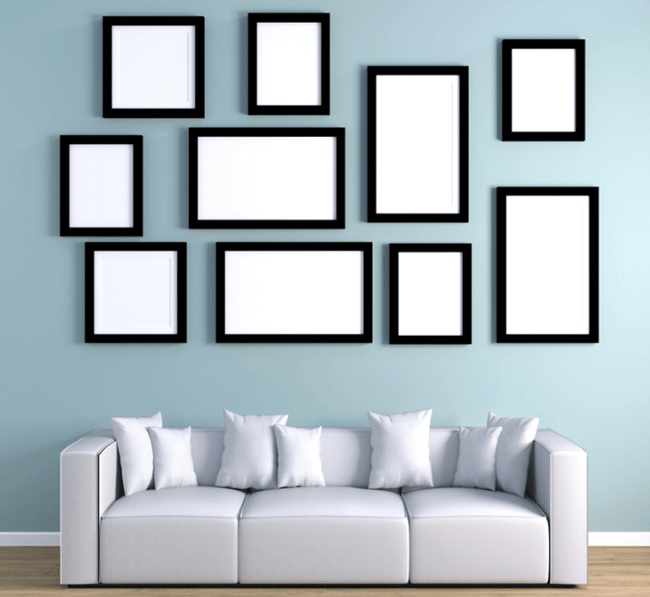
This can be achieved by considering the size, boldness, and medium of each piece, and experimenting with both symmetrical and asymmetrical layouts while leaving adequate space for each artwork to stand out on its own.
Displaying prints visually will enhance their uniqueness and beauty with a cohesive and compelling aesthetic.
Put It on a Table
This is a creative concept to showcase a collection of small artwork by displaying them on a table or surface using a decorative display easel or a flat-edged style frame, adding depth and dimension to the display and allowing the viewers to appreciate each piece up close.
The collector can curate an eye-catching display to showcase each piece's beauty and uniqueness while rotating and adding new prints to the collection easily.
Group the Small Prints in a Contemporary Manner
To curate a collection of small prints for a unique display, consider grouping them in a contemporary manner.
A visually cohesive and interesting display can be achieved by arranging prints that have similar themes, colors, or frames together.
Include lighting and shelving as well as other design elements to create a more pleasing aesthetic.
A dynamic and eye-catching display can be created by curating small prints in a contemporary and thoughtful manner.
Ordering High-Quality Photo Prints
Let's delve into the key aspects to consider when ordering high-quality photo prints to ensure the best possible results.
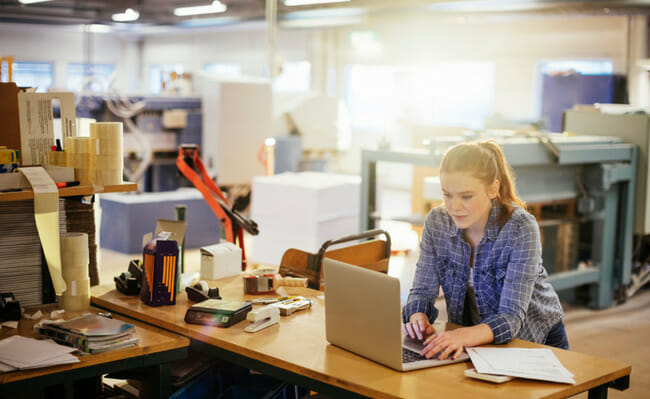
The following sections will guide you through this process:
Step-by-Step Guide to Ordering Prints from Various Printing Services
Many printing services follow the same process. However, we shall take a look at how to print on canvas, for example:
(1) Select Your Product
When ordering prints from printing services, it is crucial to choose your product as one of the essential steps.
Select a canvas style that suits your needs, such as a single print or photo collage, to display your favorite memories.
With a wide variety of choices offered by services like CanvasChamp, including hexagon prints, lyric on canvas, and word art, you can customize your prints to your liking.
(2) Your Favorite Memory Can Be Added to Your Creation
It is an option that various printing services provide where customers can upload their favorite images and have them printed on a variety of products.
Individuals can personalize and capture their most treasured memories this way.
Users can customize their prints with a personal touch to create truly unique products with this feature.
Some printing services offer further editing tools, like filters and effects, to enhance the image further before the final print.
It is, therefore, ideal to give this gift on birthdays, weddings, and anniversaries.
(3) Select the Size that Suits You
Selecting the appropriate size for your canvas print is a crucial step in the ordering process from various printing services.
Choose from pre-set sizes or customize a size based on your aesthetic and placement needs.
If your canvas print is displayed on a side table or wall, this step ensures that it will enhance the space.
(4) Choose the Perfect Wrap and Border
A wide variety of customization options are offered by printing companies to suit customers' preferences, including thin or thick gallery wraps, mirror images, image wraps, border colors, and antique frames.

(5) For a Complete Finish, Choose the Right Hardware
In order to achieve a finished look, it is essential to choose the right hardware for displaying your canvas print.
With options like no hanging kit, hooks, sawtooth hangers, easels, and dust back covers, customers can personalize their display.
Additionally, applying a favorite filter, such as sepia or pixel painting, adds an extra touch of character and style.
A truly personalized canvas print can be created by selecting the right hardware and applying a unique filter.
(6) Preview Your Prints to Make Changes Where Necessary
When ordering prints from various printing services, it is important to preview your prints before placing your order.
Your custom canvas print will meet your expectations once you have made any necessary changes or adjustments.
You can, usually, preview your print before it is printed with most printing services.
Additionally, most services provide lamination options as well as retouching services.
Your printing service will send you an email proof request once you have made your selection.
Finalize your order by reviewing and approving the proof within 24 hours, then sit back and relax.
The Importance of Proofing and Reviewing before Placing an Order
When ordering high-quality photo prints, it is of utmost importance to proof and review them thoroughly before placing the order to ensure the absence of any errors.
The purpose of this step is to prevent unnecessary costs and wasteful usage of resources, since after the printer completes an order, there is a limited time to make changes, which can negatively affect the final product's quality.
Taking the time to review and proofread the prints beforehand will ensure that customers receive a superior end product.
Ensuring Color Accuracy and Print Fidelity in the Final Product
Ensure color accuracy and print fidelity when ordering high-quality photo prints.
To do this, you will use various tools and software to proofread and preview the design to check for bleeds, resolutions, crop marks, and color modes.
It is also useful to print a test copy and compare it with the screen and color guides in order to spot any discrepancies or problems before printing the final copy.
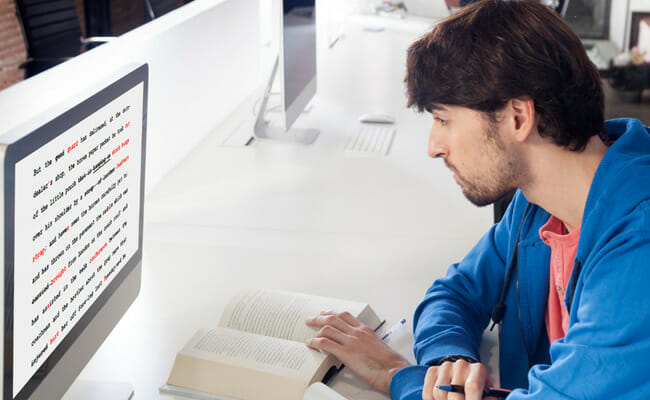
Large-Scale Photo Prints: Making a Statement
Let's now turn our attention to the grandeur and bold statement that large-scale photo prints can bring to any space.
It is not just about grabbing attention that these monumental pieces do, but about stirring emotions and inspiring thought.
Advantages of Printing Photos in Larger Dimensions (12×18, 24×36, etc.)
- Increased Detail Visibility: In large prints, details are easier to see that might be lost in smaller prints. Visually, every texture and color variation is more pronounced.
- Aesthetic Appeal: You can turn an ordinary photograph into the centerpiece of your room by printing large photo prints. A room's aesthetic appeal is greatly enhanced by adding color, depth, and character to it.
- Preservation of Memories: Larger prints give your favorite moments the grand display they deserve. They not only preserve your memories but showcase them in a way that smaller prints simply cannot match.
- Professional Appearance: Large photo prints are commonly used in galleries and exhibitions. Printing your photos in larger dimensions can give them a professional look and feel.
- Versatility: A big photo print can be used in a variety of settings, from the office to the home. Depending on your personal or professional needs, they can be framed, mounted, or displayed in other inventive ways.
Addressing Potential Challenges in Printing and Displaying Large-Scale Prints
For large-scale photo prints to be as effective as possible, they do come with several challenges.
High-resolution images are one such challenge. For large-scale prints, high-resolution images are required to avoid pixelation.
This means that images taken on devices with lower pixel counts may not be suitable for large prints.
Large-scale printing is also expensive. The use of more ink and larger canvases means a larger investment.
As well as framing and mounting the large print, it may be necessary to hire a professional to install it.
Spatial considerations are another factor. Large-scale prints can make bold statements, but they must be displayed in a space that is sufficient to accommodate them.
A print that is too large for a space can overwhelm the room and detract from the overall aesthetic.
Despite how daunting these challenges may appear, they are not insurmountable. The best way to navigate these potential pitfalls is to plan carefully, budget appropriately, and communicate clearly with your printing service.
Large-scale photo prints are well worth their effort due to their impact and beauty.
Framing and Displaying Your Photo Prints
We shall now talk a little about framing as this enhances the visual appeal of your prints and includes some important aspects to consider.
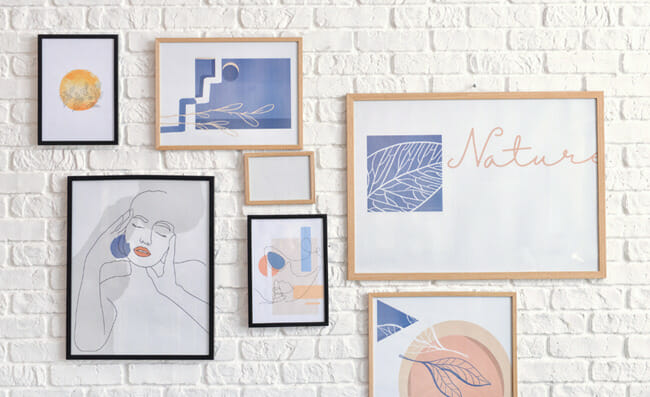
Choosing Appropriate Frames for Different Print Sizes and Styles
It is crucial to choose the right frame for the print size and style when framing and displaying your photos.
Paper size, image size, mat exact opening, mat external size, frame size, and outside frame size can all have a significant impact on the overall look and feel of the artwork.
Framing and displaying your photo prints require a good understanding of these dimensions.
Conclusion
The photo print sizes you choose should not just be a technicality, but also a tool to help enhance the impact and beauty of your captured moments. From small wallet-sized prints to grand wall displays, each size holds a unique aesthetic potential.
When you understand these sizes, you will be able to make informed decisions, resulting in photos that are perfectly balanced and composed.
So, next time you're ready to print, remember the importance of choosing the right photo print size. Bringing your photographic vision to life is more than just fitting the photo on a page!
